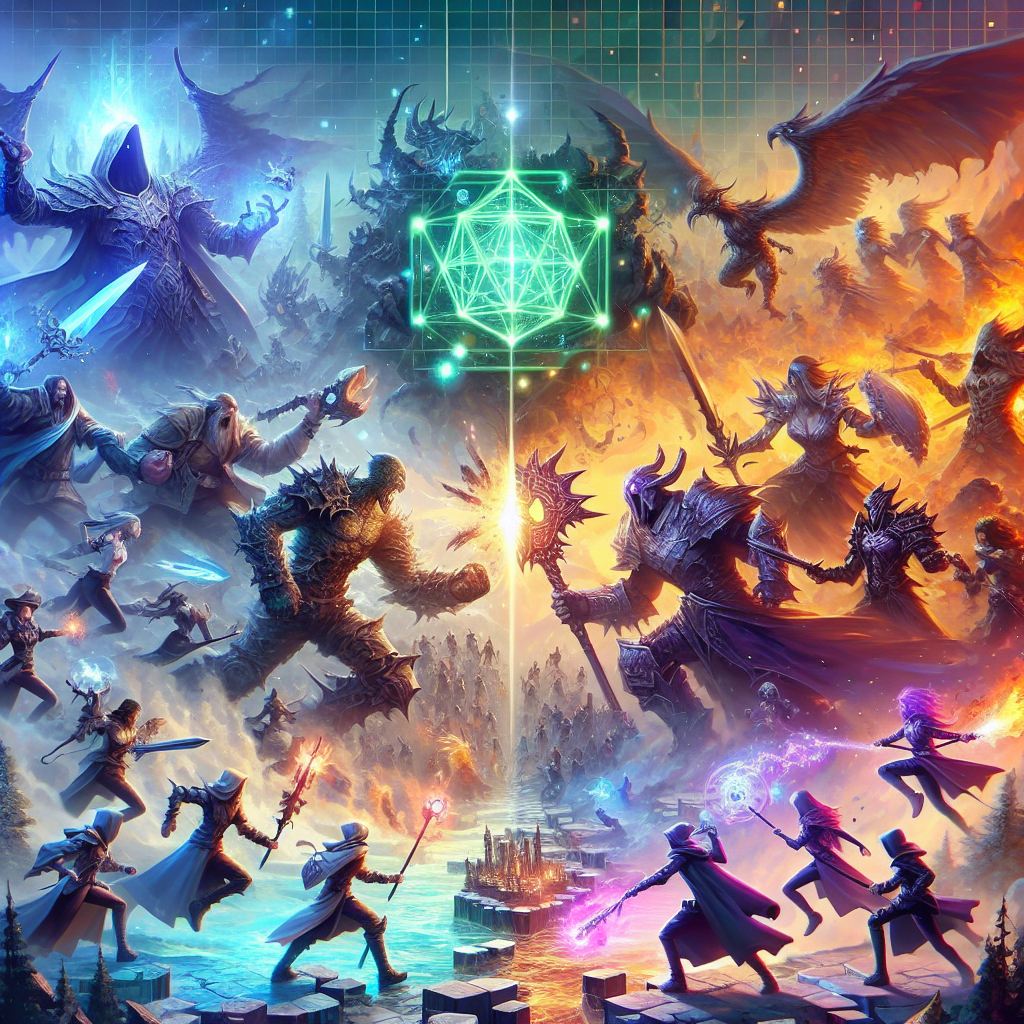Free vs Paid MMOs: Which Offers More Value?
The Rise of Free-to-Play MMOs
The massively multiplayer online (MMO) gaming landscape has undergone a significant transformation in recent years. Once dominated by subscription-based models, the industry has seen a meteoric rise in free-to-play (F2P) MMOs, challenging the traditional paid approach. These F2P titles have quickly gained popularity, attracting a vast player base with their accessible and often feature-rich offerings.
One of the primary drivers behind the growth of free-to-play MMOs is the sheer convenience and flexibility they offer. Players can dive into these games without the upfront financial commitment, allowing them to explore and experience the content at their own pace. This low barrier to entry has opened up the genre to a wider audience, including casual gamers and those who may have been deterred by the cost of paid MMOs.
Monetization Strategies in Free-to-Play MMOs
Free-to-play MMOs typically employ various monetization strategies to generate revenue, which can have a significant impact on the overall player experience. Some common approaches include:
In-Game Purchases
One of the most prevalent monetization models in free-to-play MMOs is the inclusion of in-game purchases. Players can acquire virtual items, such as cosmetic enhancements, power-ups, or convenience features, by making microtransactions. The range of these items can vary, and developers often carefully balance their impact to maintain a sense of fairness and progression.
Subscription-Based Content
While the core game may be free-to-play, some free-to-play MMOs offer a subscription-based model that grants access to additional content, features, or perks. This premium tier can provide players with exclusive in-game benefits, faster progression, or access to special events and challenges.
Loot Boxes and Gacha Mechanics
Another common monetization tactic in free-to-play MMOs is the implementation of loot boxes and gacha-style mechanics. These systems allow players to purchase randomized virtual items, often with the chance of obtaining rare or powerful gear. While these mechanics can add an element of excitement, they have also faced criticism for their potential to promote addictive and exploitative behavior.
Advantages of Free-to-Play MMOs
The rise of free-to-play MMOs has brought several advantages for both players and game developers:
Accessibility and Inclusivity
The free-to-play model lowers the barrier to entry, allowing more players to access and experience the game without the financial commitment of a traditional paid title. This increased accessibility has attracted a broader audience, including those who may have been hesitant to invest in a paid MMO.
Flexibility and Choice
Free-to-play MMOs offer players the flexibility to choose how they want to engage with the game. Players can enjoy the core experience for free or selectively invest in optional content or features that enhance their gameplay. This level of choice empowers players to tailor their experience based on their preferences and budget.
Continuous Updates and Content Releases
Developers of free-to-play MMOs often have a strong incentive to continuously update and expand their games. By keeping players engaged and invested, they can generate a steady stream of revenue through in-game purchases and subscriptions. This, in turn, can lead to a more dynamic and evolving game experience over time.
Experimentation and Risk-Taking
The free-to-play model allows game developers to take more risks and experiment with new ideas. Since players are not required to make a significant upfront investment, developers can be more agile in their approach, testing different mechanics and features to gauge player interest and engagement.
Drawbacks of Free-to-Play MMOs
While free-to-play MMOs offer many advantages, they also come with some potential drawbacks that players should be aware of:
Pay-to-Win Concerns
One of the primary criticisms of free-to-play MMOs is the potential for pay-to-win mechanics, where players can purchase in-game advantages that provide a significant edge over those who do not spend money. This can create an uneven playing field and undermine the sense of fair competition, leading to frustration among players.
Predatory Monetization Practices
Some free-to-play MMOs have been known to employ predatory monetization practices, such as aggressive marketing of loot boxes or the intentional design of game systems that encourage overspending. These tactics can be exploitative and can negatively impact the player experience, particularly for younger or vulnerable audiences.
Lack of Long-Term Commitment
The free-to-play model may lead some players to have a more transient relationship with the game, as they are less invested financially. This can result in a higher player churn rate and a potential challenge for developers in maintaining a stable and engaged player base over the long term.
Potential for Imbalance and Unfairness
In some cases, the balance between free-to-play and paid content can be perceived as unfair, with players who make financial investments gaining significant advantages over those who do not. This can create a sense of imbalance and frustration, especially in competitive game modes.
Paid MMOs: Maintaining Traditional Value
While the free-to-play model has gained significant traction, paid MMOs continue to offer their own set of advantages:
Consistent and Reliable Revenue Stream
Paid MMOs provide developers with a more consistent and reliable revenue stream, as players have made an upfront financial commitment to access the game. This can allow for more long-term planning and the allocation of resources towards sustained content development and game improvements.
Perceived Quality and Commitment
Paid MMOs are often associated with a higher perceived level of quality, as players expect a more polished and feature-rich experience in exchange for their investment. This can foster a stronger sense of commitment and loyalty among the player base.
Avoidance of Predatory Monetization
Paid MMOs generally avoid the potentially predatory monetization practices found in some free-to-play titles, such as aggressive in-game purchases or loot box mechanics. This can create a more transparent and trustworthy environment for players.
Stable and Engaged Player Base
Paid MMOs tend to attract a more dedicated and invested player base, as players have made a financial commitment to the game. This can lead to a more stable and engaged community, which can positively impact the overall gameplay experience.
Striking a Balance: Hybrid Monetization Models
In recent years, there has been a growing trend towards hybrid monetization models that combine elements of both free-to-play and paid MMOs. These models aim to strike a balance between accessibility and sustainable revenue generation.
Freemium Approach
In a freemium model, the core game is available for free, but players can opt to purchase a premium subscription or additional content to access more features, content, or in-game advantages. This approach allows players to sample the game without upfront costs while providing a revenue stream for the developers.
Free-to-Play with Optional Purchases
Some MMOs offer a free-to-play experience with the option to make selective in-game purchases. These purchases may unlock cosmetic items, convenience features, or access to specific game modes or content. The goal is to provide a robust free experience while allowing players to enhance their gameplay through optional, non-essential purchases.
Tiered Subscription Models
Certain MMOs have adopted a tiered subscription model, where players can choose between a basic free-to-play tier and one or more premium subscription levels. These premium tiers often include exclusive content, faster progression, or additional in-game benefits, catering to players with varying budgets and commitment levels.
Key Takeaways
The rise of free-to-play MMOs has significantly impacted the gaming landscape, offering players more choice and accessibility. While free-to-play models have their advantages, such as increased inclusivity and the opportunity for experimentation, they also come with potential drawbacks, including pay-to-win concerns and predatory monetization practices.
Paid MMOs, on the other hand, provide a more consistent revenue stream for developers and a stronger sense of quality and commitment from players. However, they may face challenges in maintaining a stable and engaged player base.
To strike a balance, hybrid monetization models that combine free-to-play and paid elements have emerged, offering players the flexibility to choose their level of investment while providing developers with sustainable revenue streams.
Ultimately, the decision between free-to-play and paid MMOs will depend on individual preferences, budget, and the specific game's implementation of its monetization strategy. Savvy players should carefully evaluate the pros and cons of each approach to determine the option that best aligns with their gaming needs and priorities.
Explore the rise of free-to-play MMOs and how they compare to traditional paid MMOs in terms of value, accessibility, and monetization strategies. Discover the advantages and drawbacks of each approach to help you make an informed decision.





